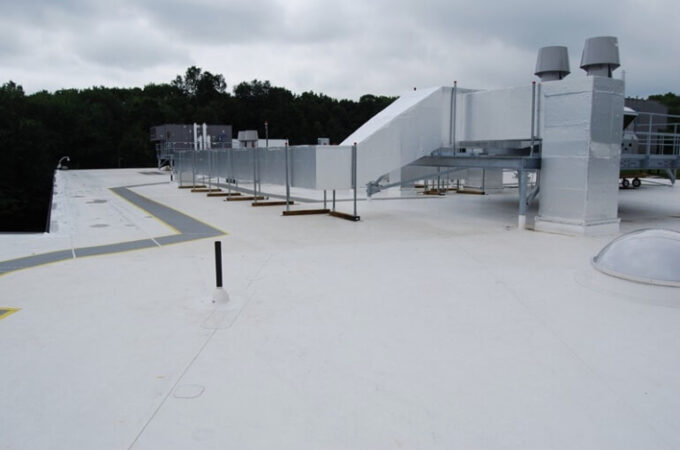
Green Reads: Developing Minds with Books on Sustainability
Introduction
A new chapter that marries the potency of literature with the necessity of sustainability is being written in the ongoing story of the health of our planet. These pages contain more than just ink on paper; they are a vibrant symphony of inspiration and knowledge that weaves stories of ecological balance with the useful benefits of sustainable living. We will explore the transforming advantages that sustainable choices bring to our lives, communities, and the planet we call home as we set out on this literary trip. In addition, it contains insightful works that show the way toward a greener world and books on sustainability.
The Function of Sustainability in Literature
Sustainability Beyond Marketing Phrases
Sustainability is a way of life that encourages good stewardship of our world, not merely a trendy slogan. Explore complicated environmental concerns like climate change, biodiversity loss, ethical consumerism, and renewable energy via sustainable literature. These books educate as well as emotionally and intellectually engage readers, developing a greater comprehension of the relationship between human behavior and ecological health.
Reading to Develop Eco-Consciousness
Naturalist sympathies
The power of sustainable writing to inspire empathy for nature is one of its most impressive features. Readers are drawn into environments they may never have encountered through colorful imagery and thought-provoking storylines. This immersion inspires a desire to preserve these landscapes for future generations in addition to educating people.
Motivating Good Behavior
Green books motivate action in addition to increasing awareness. The tales in these books light a flame that inspires readers to take concrete, sustainable actions, whether it be cutting waste, promoting local agriculture, or pushing for policy reforms. This shift from inactive reader to active advocate exemplifies the power of literature to bring about positive change.
The Advantages of Sustainable Living: Creating a Greener Future

Sustainable living is more than just a fad; it’s a way of life that takes the environment, society, and economy into account. Adopting sustainable behaviors has a wealth of advantages that go well beyond one’s own well-being. Let’s look at some of these advantages and see how they have a positive impact on people and the environment.
Protecting natural resources through environmental stewardship
The wise use of natural resources is a key component of sustainable living. People may lessen the impact on ecosystems by using renewable resources, reducing trash, and conserving energy. This proactive strategy assures that future generations will have access to clean air, water, and fertile land while preserving biodiversity and safeguarding vulnerable ecosystems.
Climate Change Mitigation Through Reduced Carbon Footprint
The decisions we make every day can have a big impact on how much greenhouse gas we emit. Choosing environmentally friendly transportation, energy-saving gadgets, and responsible consumerism are all aspects of sustainable living. By reducing our carbon footprint, we help protect the world for both current and future generations by supporting global efforts to combat climate change.
Financial Savings: Reducing Spending
Living a sustainable lifestyle has advantages for both the environment and your wallet. Homes that are energy-efficient use less energy for lighting, heating, and cooling, which results in cheaper utility costs. Additionally, adopting habits like fixing and reusing things might lessen the need for ongoing purchases, ultimately saving you money.
Improving Quality of Life through Health and Well-Being
Living sustainably frequently results in a healthier way of life. Organic foods that are locally sourced are more nutrient-dense for your health and better for the environment. Spending time outdoors and exercising instead of driving are both beneficial for cardiovascular and mental health. Sustainable living encourages a positive balance between environmental and human health.
Fostering Social Connections to Build Stronger Communities
Collaboration and community involvement are fostered through sustainable living. People come together through involvement in neighborhood farmers’ markets, community gardens, and environmental efforts, building a sense of belonging and shared purpose. Communities become more resilient and connected when they work together to achieve shared environmental goals.
Ethical Consumption: Promoting Reputable Behavior
By purchasing sustainable goods, consumers are assisting businesses that place a high value on morality and the environment. This customer demand has a knock-on effect that motivates companies to use sustainable production techniques, cut waste, and put fair labor standards first. Customers influence positive change in all industries by making thoughtful decisions.
Navigating Uncertain Futures through Resilience and Adaptation
Sustainable living gives people and communities the tools they need to adapt to their environment. Those who have adopted sustainable practices are better equipped to handle disruptions as climate-related problems become more common. These abilities, which range from permaculture methods to rainwater gathering, increase resilience in the face of unpredictability.
Sustainability Education and Learning Opportunities
Continuous learning about ecological systems, conservation, and cutting-edge technologies is required for adopting a sustainable lifestyle. This pursuit of knowledge opens doors to fresh encounters and viewpoints. Additionally, those who engage in sustainable living frequently turn into advocates, sharing their knowledge and motivating others to change for the better.
Important Green Reads

Here are a few well-known works about sustainability, along with brief summaries of each:
1. Rachel Carson’s “Silent Spring”
The current environmental movement is frequently regarded as having its roots in Rachel Carson’s seminal book. The 1962 book “Silent Spring” examines how pesticides hurt the environment, especially birds and other species. The book’s compelling style and narrative, which are based on research, highlight the importance of ecological awareness and sensible chemical use.
2. William McDonough and Michael Braungart’s “Cradle to Cradle: Remaking the Way We Make Things”
In this significant work, McDonough and Braungart propose a new paradigm for product design and manufacturing—one that prioritizes sustainability from the start. Moreover, they support the development of products that may be constantly recycled or used for new purposes in an effort to reduce waste and advance a circular economy.
3. Michael Pollan’s “The Omnivore’s Dilemma: A Natural History of Four Meals”
In this, readers are taken on a tour through the numerous ways our food is produced and eaten in Michael Pollan’s examination of the modern food system. “The Omnivore’s Dilemma” exhorts readers to think about the environmental, moral, and health ramifications of their eating choices, from industrial agriculture to organic farming.
4. Kate Raworth’s “Doughnut Economics: Seven Ways to Think Like a 21st-Century Economist”
Kate Raworth presents a brand-new economic framework that upholds the principles of sustainability and social justice. Raworth’s “doughnut economics” approach offers a framework for redesigning our economic systems as it works to balance the requirements of both people and the environment.
5. Robin Wall Kimmerer’s “Braiding Sweetgrass: Indigenous Wisdom, Scientific Knowledge, and the Teachings of Plants”
The book by Robin Wall Kimmerer skillfully combines traditional knowledge, individual stories, and theoretical knowledge. She promotes a closer relationship between people and the environment by emphasizing reciprocity with the natural world through stories and reflections.
6. Elizabeth Kolbert’s “The Sixth Extinction: An Unnatural History”
Elizabeth Kolbert examines the ongoing catastrophic extinction crisis that is a result of human activity in her book “The Sixth Extinction.” Kolbert digs into the severe effects of climate change, habitat devastation, and other causes driving species extinction. He bases his analysis on scientific data and field observations.
7. David J.C. MacKay’s “Sustainable Energy: Without the Hot Air”
In his work, David MacKay examines the possibilities for switching to sustainable energy sources and global energy usage using data. The book provides readers with knowledge of the difficulties and possibilities of reaching a low-carbon energy future through simple explanations and interesting pictures.
8. Naomi Klein’s “This Changes Everything: Capitalism vs. the Climate”
The interaction of economic systems and climate change is a topic Naomi Klein addresses in “This Changes Everything. In order to confront the climate catastrophe, she contends, our capitalist society must be rethought and restructured, challenging existing ideas of consumption and growth.
9. Paul Hawken’s “Drawdown: The Most Comprehensive Plan Ever Proposed to Reverse Global Warming”
An international team of scholars and specialists put together “Drawdown” as a collection of doable solutions to stop global warming. The book examines a wide range of tactics, including trash reduction, regenerative agriculture, and renewable energy.
10. Jeremy L. Caradonna’s “Sustainability: A History”
In “Sustainability: A History,” Jeremy Caradonna explores the concept of sustainability’s development through a number of philosophical, historical, and cultural perspectives. This book provides insights into how the concept of sustainability evolved and how important it has been in influencing current environmental debates.
These publications provide a variety of viewpoints on sustainability, covering anything from food systems and ethical consumerism to environmental preservation and economics. So, you can gain a deeper knowledge of the difficulties and possibilities involved in building a more sustainable future by reading these texts.
Conclusion
The article “Green Reads: Nurturing Minds with Sustainability Books” sheds light on the outstanding role that literature plays in promoting environmental awareness. Sustainable literature has the capacity to influence attitudes, habits, and policy choices by bringing attention to environmental issues and inspiring meaningful action. The pages of these books provide consolation, inspiration, and a path toward a greener future while we struggle with urgent ecological concerns. Let’s turn the pages, take in the knowledge, and work together to create a world where sustainability is a way of life rather than just a goal.





